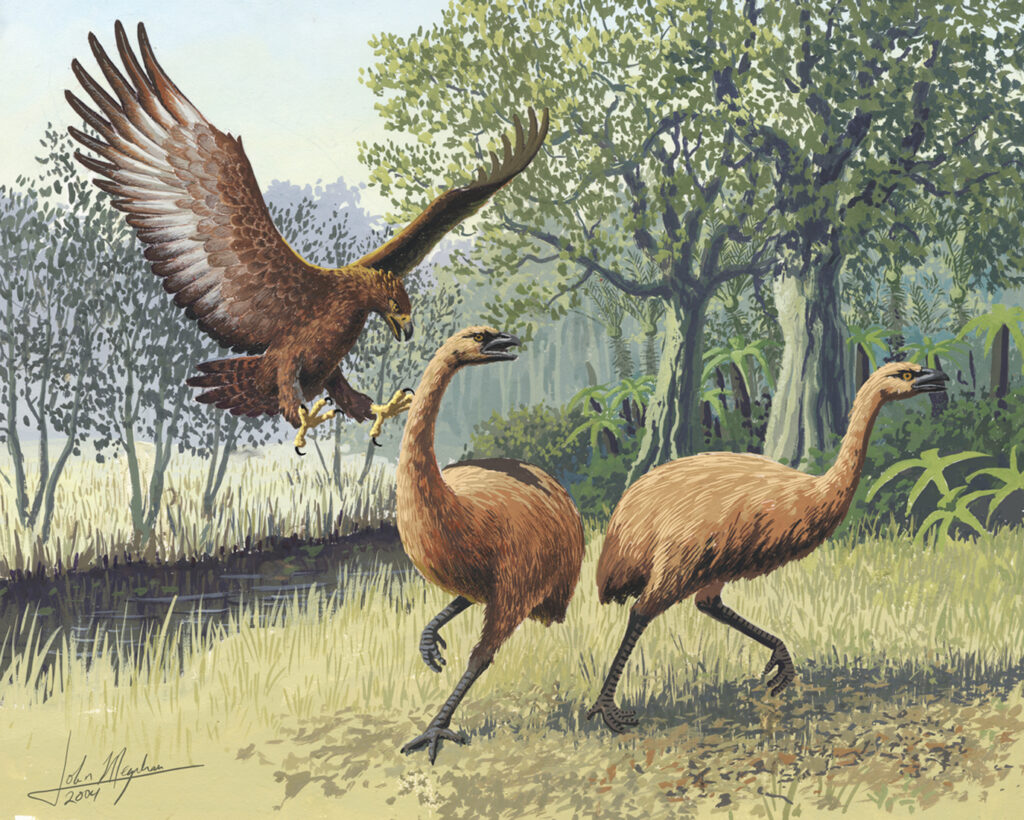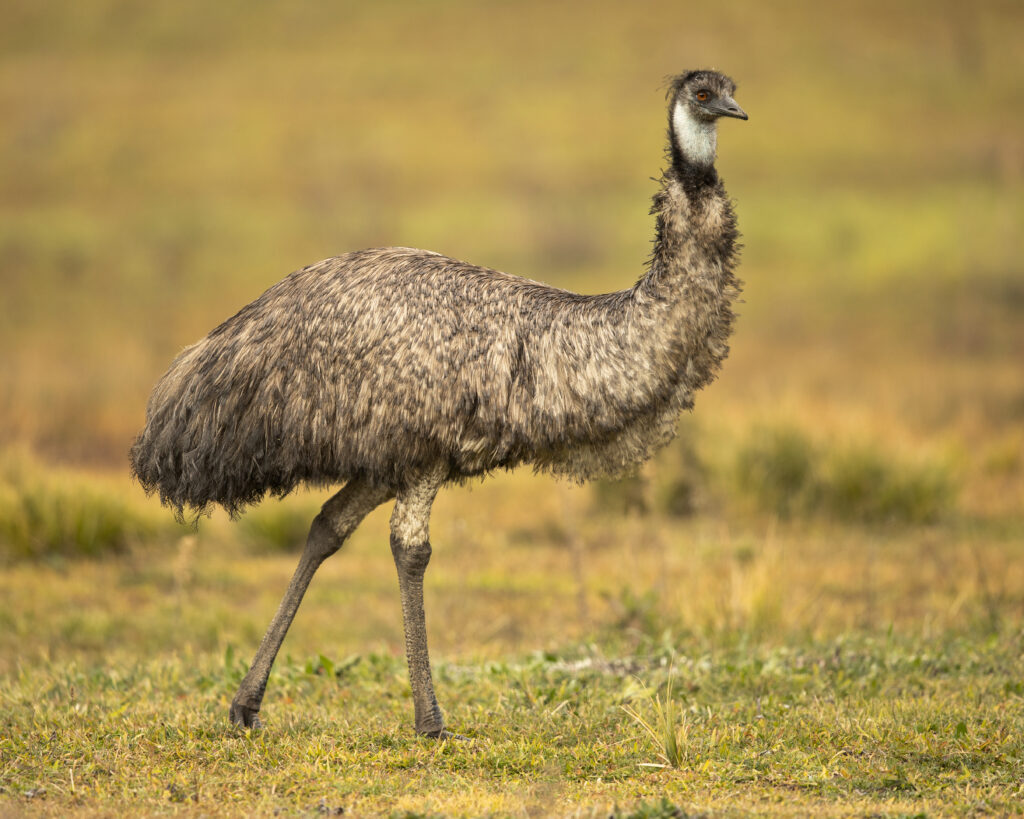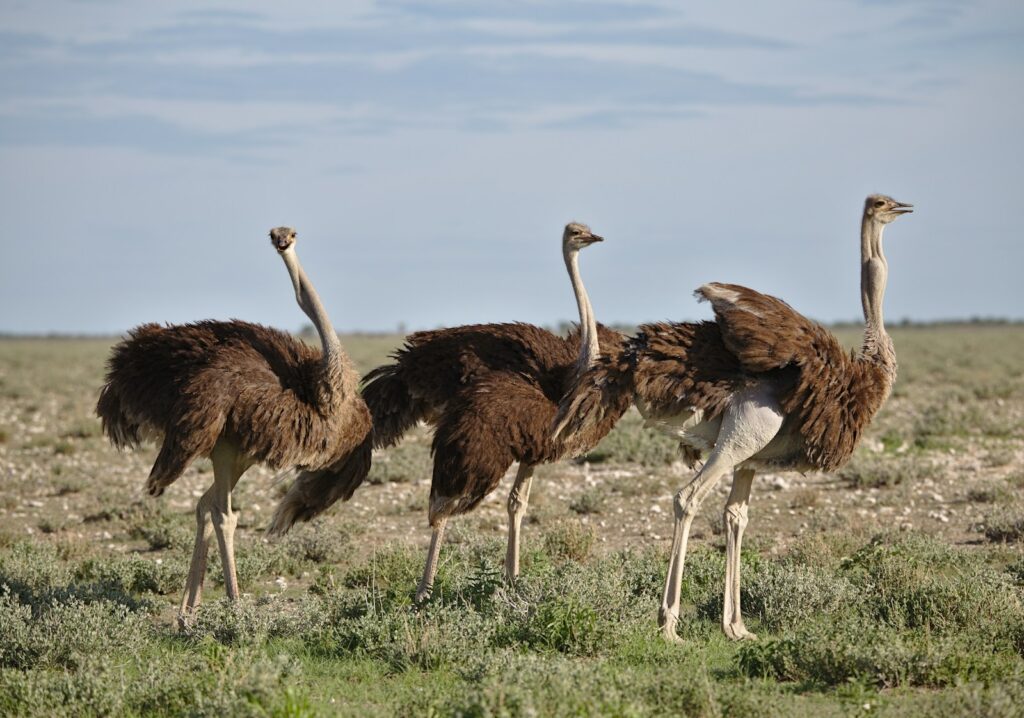The extinction of dinosaurs 66 million years ago marked one of the most significant turning points in Earth’s biological history. While most large land animals vanished, birds—the surviving dinosaur lineage—endured and evolved in fascinating ways. Particularly intriguing is how flightless birds, rather than their flying cousins, emerged as dominant avian species in many ecosystems following the catastrophic Cretaceous-Paleogene extinction event. This ecological shift represents one of evolution’s most remarkable stories, revealing how adaptability can sometimes mean abandoning what seems like an advantageous trait. Let’s explore why these ground-dwelling birds thrived in a world suddenly emptied of dinosaurs.
The Dinosaur-Bird Connection

Modern birds are not merely related to dinosaurs—they are living dinosaurs, specifically descendants of theropods, the group that included predators like Velociraptor and Tyrannosaurus rex. This evolutionary relationship was cemented through decades of fossil discoveries showing feathered dinosaurs and transitional species that bridged the gap between non-avian dinosaurs and birds. The ability to fly evolved in this lineage before the mass extinction, giving early birds an advantage that helped them survive when their larger relatives perished. However, what’s particularly fascinating is that after surviving thanks to flight, many bird lineages would eventually abandon this ability in the post-dinosaur world. This evolutionary U-turn challenges our assumptions about adaptation and reveals the complex relationship between survival advantages and ecological opportunity.
The Cretaceous-Paleogene Extinction Event

Approximately 66 million years ago, a massive asteroid struck Earth near what is now the Yucatán Peninsula in Mexico, triggering a global catastrophe that eliminated roughly 75% of all species. The impact sent enormous quantities of dust and aerosols into the atmosphere, blocking sunlight and causing dramatic climate changes. Large-bodied animals like non-avian dinosaurs were particularly vulnerable to the resulting food shortages and habitat destruction. The extinction event created ecological vacancies across the planet, especially in niches previously occupied by medium-sized ground-dwelling dinosaurs. This ecological reset provided unprecedented opportunities for surviving lineages to evolve and adapt. Small-bodied flying birds survived the extinction, but the aftermath created conditions that would favor the evolution of flightlessness in many bird lineages.
Ecological Niches Left Vacant

The disappearance of dinosaurs left numerous ecological niches unoccupied, particularly for terrestrial herbivores and omnivores of medium body size. Ground-dwelling dinosaurs had dominated these roles for over 150 million years, preventing birds from fully exploiting these ecological opportunities. With these competitors suddenly removed, birds faced reduced selection pressure to maintain flight for predator evasion and found new opportunities for ground-based feeding strategies. This vacuum effectively invited evolutionary experimentation. The absence of large terrestrial predators in many post-extinction ecosystems further reduced the survival advantage of flight, especially on islands and isolated continents. These vacant niches represented not just space but untapped resources and lifestyle possibilities that flightless birds could now explore with reduced competition.
The Energetic Cost of Flight

Flying requires enormous energy expenditure and imposes significant physiological constraints on birds. The maintenance of flight muscles, specialized lightweight bones, and high metabolic rates demands substantial caloric intake. When predation pressure decreased following the dinosaur extinction, the cost-benefit equation of flight shifted dramatically in many environments. Birds that could reduce these expensive adaptations could redirect energy toward other functions like increased body size, reproductive output, or exploiting new food sources. Flight apparatus gradually became reduced in lineages where the benefits no longer outweighed the costs. This energetic trade-off has driven the evolution of flightlessness repeatedly throughout avian evolutionary history, with over 60 independent instances across different bird families, demonstrating that abandoning flight can be an advantageous strategy under the right ecological circumstances.
Island Gigantism and Isolation

Islands have served as evolutionary laboratories for flightless bird development due to their isolation and unique ecological conditions. Without mammalian predators, birds on islands experienced dramatically reduced selection pressure to maintain flight capabilities. This freedom from predation allowed birds to evolve larger body sizes—a phenomenon known as island gigantism—exemplified by the extinct moa of New Zealand and elephant birds of Madagascar, which grew to astonishing heights exceeding 10 feet. Island isolation also promoted specialized adaptations to local food resources that often favored ground-dwelling lifestyles. The limited geographic range of islands meant that long-distance dispersal abilities conferred fewer advantages than they would on continents. These isolated environments essentially created evolutionary experiments where the advantages of flightlessness could be fully expressed without the typical constraints found in continental ecosystems.
The Rise of Ratites

Ratites—the group including ostriches, emus, cassowaries, rheas, and kiwis—represent the most successful radiation of flightless birds following the dinosaur extinction. These birds share anatomical features, including a flat breastbone lacking the keel that anchors flight muscles in flying birds. Molecular and fossil evidence suggests their common ancestor could fly, meaning flightlessness evolved independently multiple times within this group as they spread across the southern continents. Ratites diversified to fill various ecological niches, from the massive herbivorous moa to the specialized insectivorous kiwi. Their success story demonstrates how abandoning flight opened new evolutionary pathways rather than limiting possibilities. The geographic distribution of ratites across southern continents provides compelling evidence for the breakup of the supercontinent Gondwana, as these birds rafted on slowly separating landmasses.
The Terror Birds of South America

Perhaps the most dramatic example of flightless bird dominance after the dinosaur extinction was the rise of phorusrhacids, colloquially known as “terror birds,” in South America. These predatory birds evolved to heights of up to 10 feet and possessed massive hooked beaks capable of delivering lethal strikes to prey. For nearly 60 million years, terror birds occupied apex predator niches in South American ecosystems, effectively replacing the ecological role of predatory dinosaurs. Their success demonstrates how flightless birds could not merely survive but thrive as dominant predators in a post-dinosaur world. The isolation of South America as an island continent for much of this period facilitated its evolutionary success, as it limited competition from placental mammalian predators developing elsewhere. Terror birds only declined following the Great American Interchange when North and South America connected, bringing competing mammalian predators southward.
The Elephant Birds of Madagascar

Madagascar’s elephant birds (Aepyornithidae) evolved in isolation to become the heaviest birds that ever lived, with some species weighing over 1,000 pounds and standing nearly 10 feet tall. These massive flightless birds dominated Madagascar’s ecosystems for millions of years after the dinosaur extinction, exploiting plant resources inaccessible to smaller animals. Their enormous eggs, with volumes exceeding 7 gallons, represent the largest single cells ever known to exist in any animal. Elephant birds survived until relatively recently, with the last species disappearing only about 1,000 years ago following human arrival on Madagascar. Their evolutionary history highlights how flightless birds could achieve extraordinary size and ecological dominance when freed from both dinosaurian competition and mammalian predation. The isolation of Madagascar created a unique evolutionary laboratory where these birds could explore the upper limits of avian body size.
New Zealand’s Flightless Bird Paradise

New Zealand represents perhaps the most remarkable example of flightless bird dominance, where the absence of terrestrial mammals allowed birds to evolve into virtually every ecological niche. Before human arrival, the islands hosted at least 16 species of moa ranging from turkey-sized to 12 feet tall, the massive predatory Haast’s eagle, flightless wrens, and numerous other flightless species. This unique ecosystem demonstrates how birds can diversify to fill roles typically occupied by mammals when given evolutionary opportunity. The ecological diversity of New Zealand’s flightless birds included herbivores, insectivores, omnivores, and apex predators—essentially recreating an entire terrestrial ecosystem using only birds. This evolutionary experiment lasted for millions of years until human arrival approximately 700 years ago led to the extinction of many species. New Zealand’s avifauna provides perhaps the clearest window into how birds could dominate terrestrial ecosystems in the absence of mammalian and dinosaurian competition.
Repeated Evolution of Flightlessness

What makes flightlessness particularly fascinating is that it has evolved independently dozens of times across the avian family tree, suggesting strong selective advantages under certain conditions. Rails alone have evolved flightlessness at least 15 separate times on different islands worldwide. Flightless cormorants evolved on the Galápagos Islands, while flightless steamer ducks developed in southern South America. This pattern of convergent evolution—where unrelated species independently develop similar adaptations—indicates that flightlessness represents an optimal solution to specific ecological challenges rather than an evolutionary accident. Each instance follows a similar pattern: reduced predation pressure, stable food sources, and limited need for long-distance dispersal. The repeated evolution of this trait across diverse bird families and geographic regions demonstrates that abandoning flight can be highly advantageous under the right ecological circumstances, particularly in the post-dinosaur world, where many niches became available.
Competition with Mammals

While flightless birds initially thrived after the dinosaur extinction, their dominance was eventually challenged by the radiation of placental mammals. Mammals and birds engaged in an evolutionary contest for similar ecological niches, with mammals generally proving more successful in continental settings. In South America, terror birds dominated until the Great American Interchange brought competing mammalian carnivores from North America. Northern continents saw limited flightless bird evolution precisely because mammalian competitors were well-established. The most successful flightless birds typically evolved on islands or isolated continents where mammalian competition was reduced or absent. This competitive dynamic explains the geographic pattern of flightless bird evolution and highlights how ecological opportunity, rather than just evolutionary capability, shapes adaptive radiation. The success of mammals in continental settings demonstrates that flightlessness was most advantageous in specific ecological contexts rather than universally beneficial.
Modern Survivors and Human Impact

Today’s surviving flightless birds represent only a fraction of the diversity that once existed, largely due to human hunting and introduced predators. Ostriches survive in Africa, emus in Australia, rheas in South America, and cassowaries and kiwis in the Australasian region. These modern survivors have persisted through a combination of adaptations, including large body size, speed, defensive capabilities, and specialized habitats. The vulnerability of flightless birds to extinction became tragically apparent when humans reached previously isolated habitats, with species like the dodo, moa, and elephant birds disappearing shortly after human contact. This vulnerability stems directly from the evolutionary trade-offs that made flightlessness advantageous—the loss of escape capabilities and reproductive strategies optimized for predator-free environments. Conservation efforts for remaining flightless species now focus on habitat protection and predator control, recognizing the unique evolutionary heritage these birds represent.
The Evolutionary Legacy

The dominance of flightless birds after the dinosaur extinction represents one of evolution’s most fascinating natural experiments. These birds demonstrate that evolutionary success isn’t always about maintaining complex adaptations but sometimes about strategic simplification when ecological conditions change. Flightless birds filled ecological roles previously occupied by dinosaurs, from giant herbivores to apex predators, proving that evolutionary relationships don’t necessarily determine ecological function. Their success and subsequent challenges highlight the dynamic nature of evolution in response to changing planetary conditions. The story of flightless birds serves as a powerful reminder that evolution doesn’t follow a linear path toward increasing complexity but responds opportunistically to ecological circumstances. Today’s surviving flightless species represent the last chapters of an evolutionary story that began in the aftermath of the dinosaur extinction, showcasing nature’s remarkable ability to rebuild and reorganize following catastrophic events.
Why Losing Flight Helped Birds Thrive Post-Extinction

The dominance of flightless birds following the dinosaur extinction represents one of evolution’s most illuminating success stories. These birds flourished by abandoning what seems like an advantageous trait—flight—to exploit new ecological opportunities in a world suddenly emptied of dinosaurian competitors. Their diversification across continents and islands demonstrates evolution’s opportunistic nature. While mammals eventually outcompeted many flightless bird lineages, the evolutionary experiment of flightlessness proved remarkably successful for millions of years. The survivors of this once-diverse group—ostriches, emus, cassowaries, rheas, and kiwis—stand as living reminders of how drastically Earth’s ecosystems transformed after the dinosaurs disappeared, and how evolution can take unexpected paths when presented with ecological opportunity.




